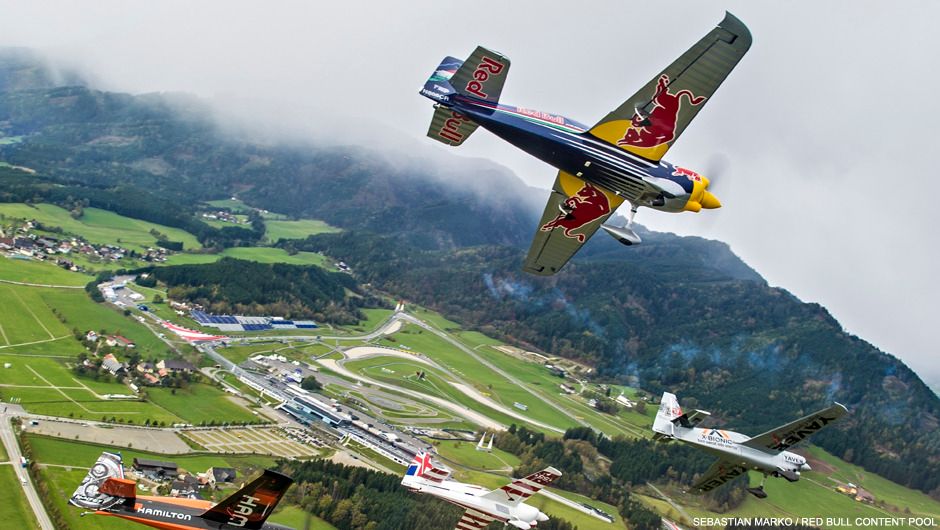Red Bull Air Race
RED BULL AIR RACE: THAT’S HOW IT WORKS
The 2015 Red Bull Air Race World Championship season got underway a few weeks ago in Abu Dhabi. But what does a race weekend involve, who is allowed to compete, and in what kind of aircraft?
This year’s Red Bull Air Race World Championship extends over eight events in seven countries on three continents. The curtain-raiser in Abu Dhabi went off without a hitch. The remainder of the season will be fought out at Chiba in Japan, at Rovinj on the Croatian Adriatic coast, at Budapest (Hungary), at Ascot (home of British horse racing), at the Red Bull Ring in Spielberg (Austria) and finally in the USA where the last two races of the year will be staged in the skies above the Texas Motor Speedway in Fort Worth and the city of Las Vegas.
A total of 14 pilots have thrown their hats in the ring. As Official Logistics Partner to the Red Bull Air Race World Championship, DHL will be transporting two more light aircraft to the race venues this season. The new names in the line-up are Spain’s Juan Velarde and Frenchman Francois Le Vot. Both earned their spurs last year in the Challenger class and have now graduated to the Master class. The rest of the field is made up of competition veterans. Coming through from the previous campaign are ex-champions Paul Bonhomme, Kirby Chambliss, Hannes Arch and Peter Besenyei, as well as Matthias Dolderer, Michael Goulian, Matt Hall, Nicolas Ivanoff, Pete McLeod and Martin Sonka.
With the increased number of contestants, the procedure for the race weekend has undergone a few changes. A free practice session is followed by qualification, the results of which determine the Round of 14 which is contested on a knock-out basis. The fastest in qualifying flies against the slowest, the second-fastest against the second-slowest and so on. The winners of the seven pairs plus the loser with the best time proceed to the Round of 8, which also employs the knock-out formula. The four winners then battle for the trophy in the last session of the day – the Final 4. This is not a head-to-head but rather a race against the clock to establish the overall winner, runner-up, third and fourth. Victory is rewarded with twelve championship points, second place with nine, third place with seven and fourth place with five. The four losers of the Round of 8 are classified from P5 to P8, depending on where they show up on the timesheets, and score four, three, two or one point respectively. Contestants place ninth or lower go home empty-handed.
There have been no changes to the course layout since last year. The races are flown over a distance of approximately five kilometres, and pilots have to negotiate the characteristic 25-metre-tall pylons with various prescribed manoeuvres. Time penalties are imposed for flying too high or too low through the pylons or indeed for clipping one of these inflatable course markers. Although the choice of the aircraft body is up to each pilot, the engine (Lycoming Thunderbolt AEIO-540-EXP) and propeller (Hartzell 7690) have been standardised. The 2015 campaign features eleven Zivko Edge 540s, two MX Aircraft MXS and a Corvus Racer 540. DHL as Official Logistics Partner will transport all 14 race aircraft and a total of 380 tonnes of equipment from venue to venue.










Content from disqus has been blocked because you did not allow to load it.
Loading the blocked content will adjust your privacy setting and content from this service will not be blocked in the future.
You have the right to revoke or change your decision at any time.
Posting Guidelines
All communications on Logistics of Things should be appropriate for a professional community, respecting the diverse views of individuals from different backgrounds. We will review all comments and reserve the right to terminate or restrict access to user's account and to delete any content posted through it, without notice and at our discretion, if we deem it to be overly promotional, offensive, or off topic.
All posting become property of DHL.